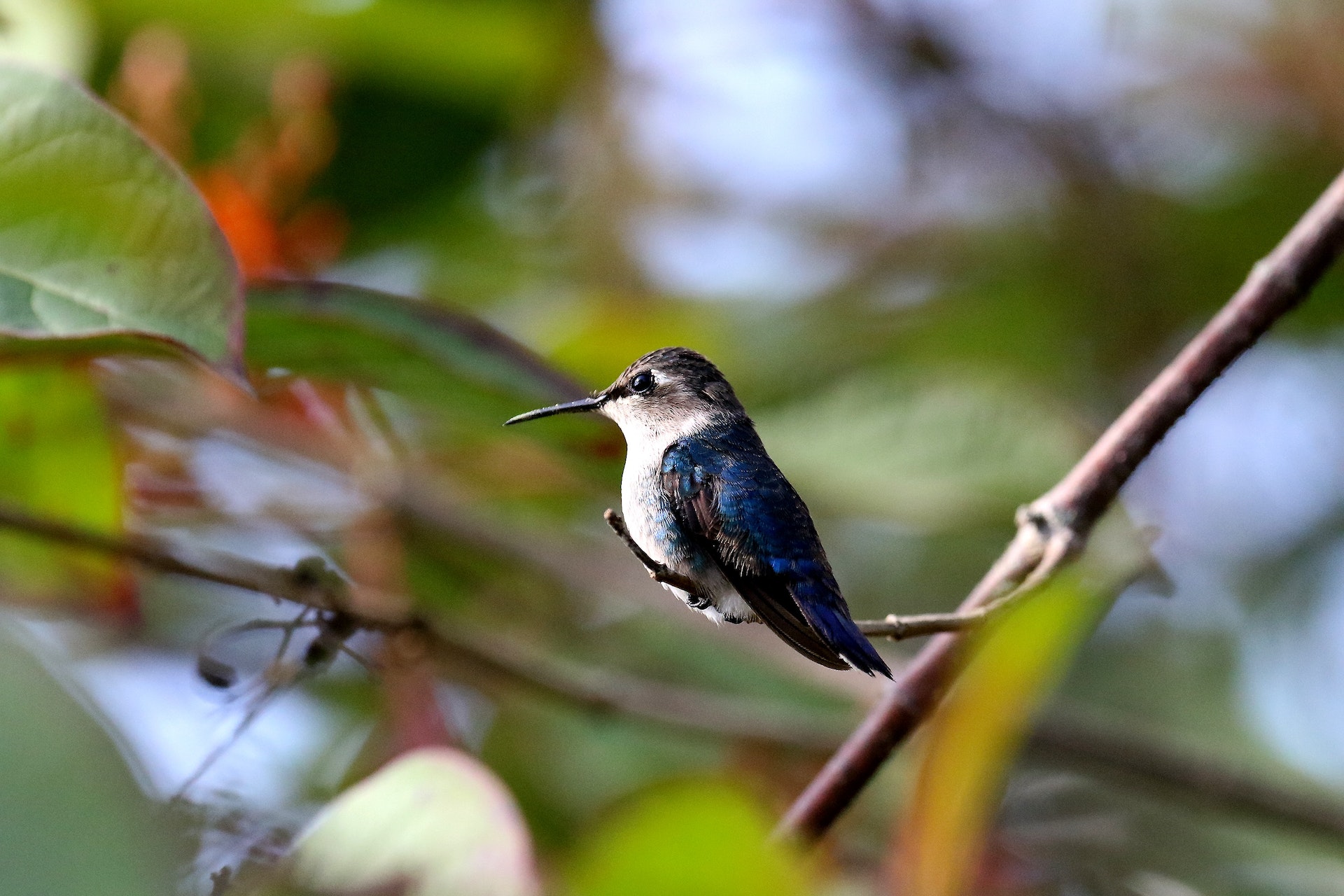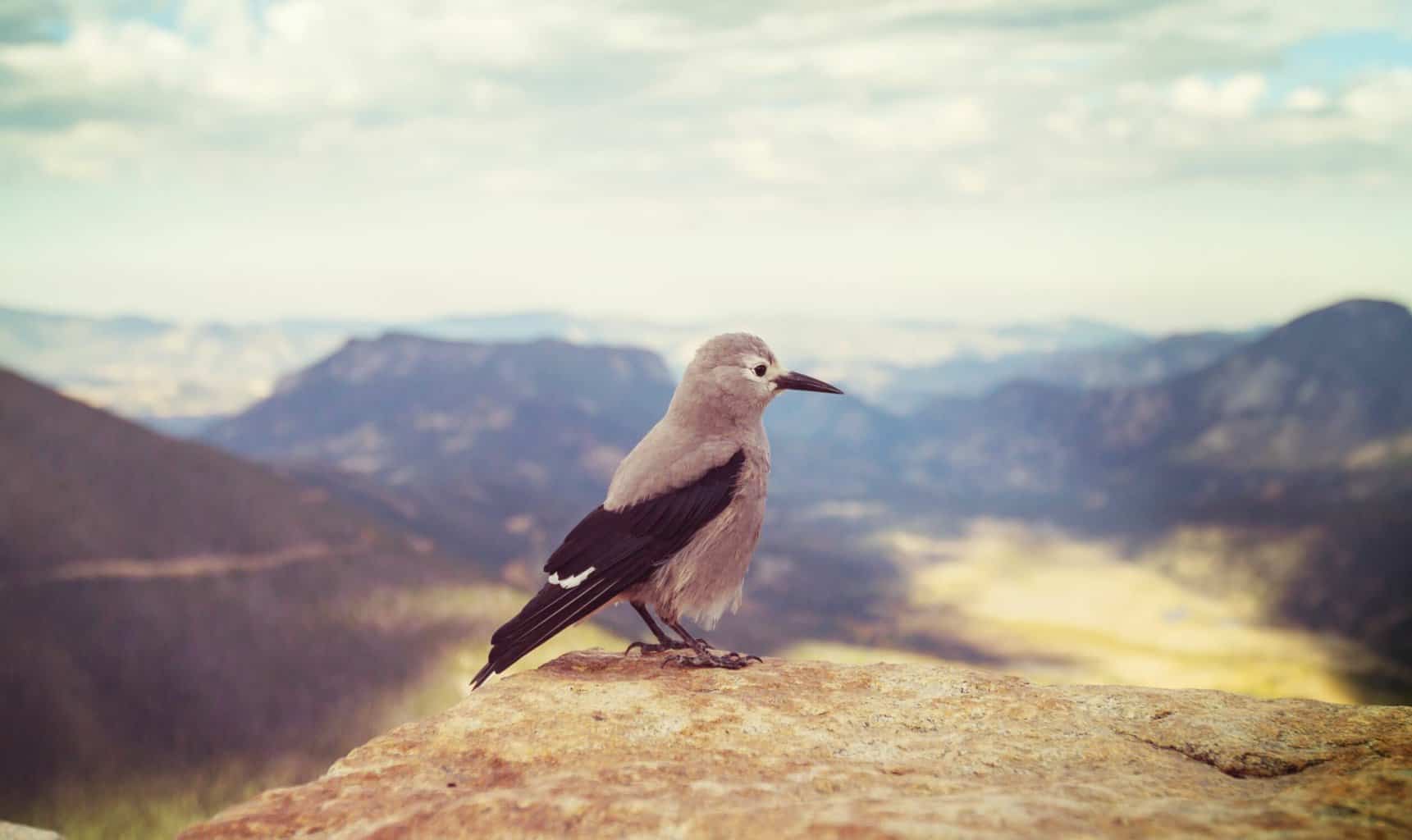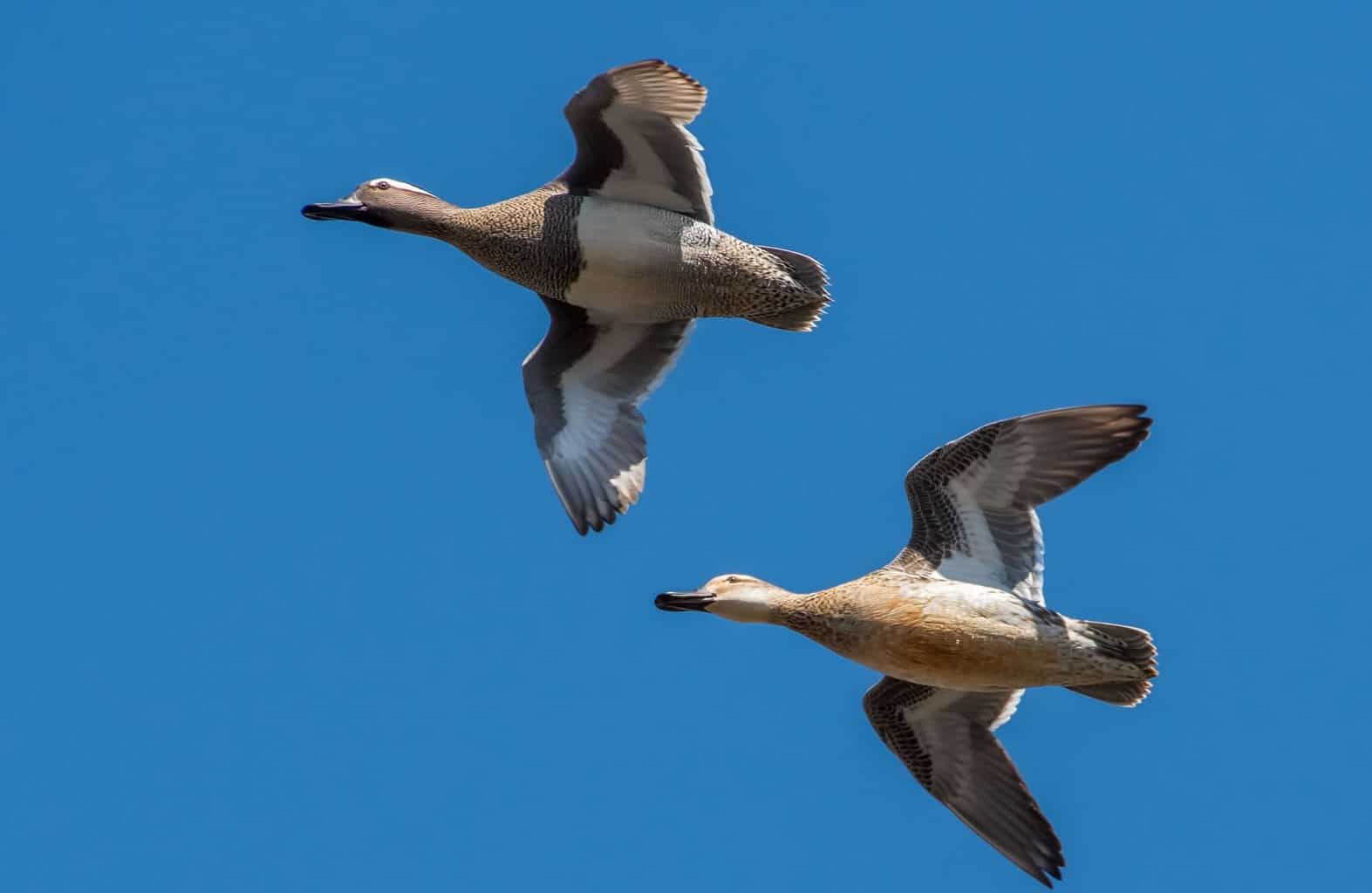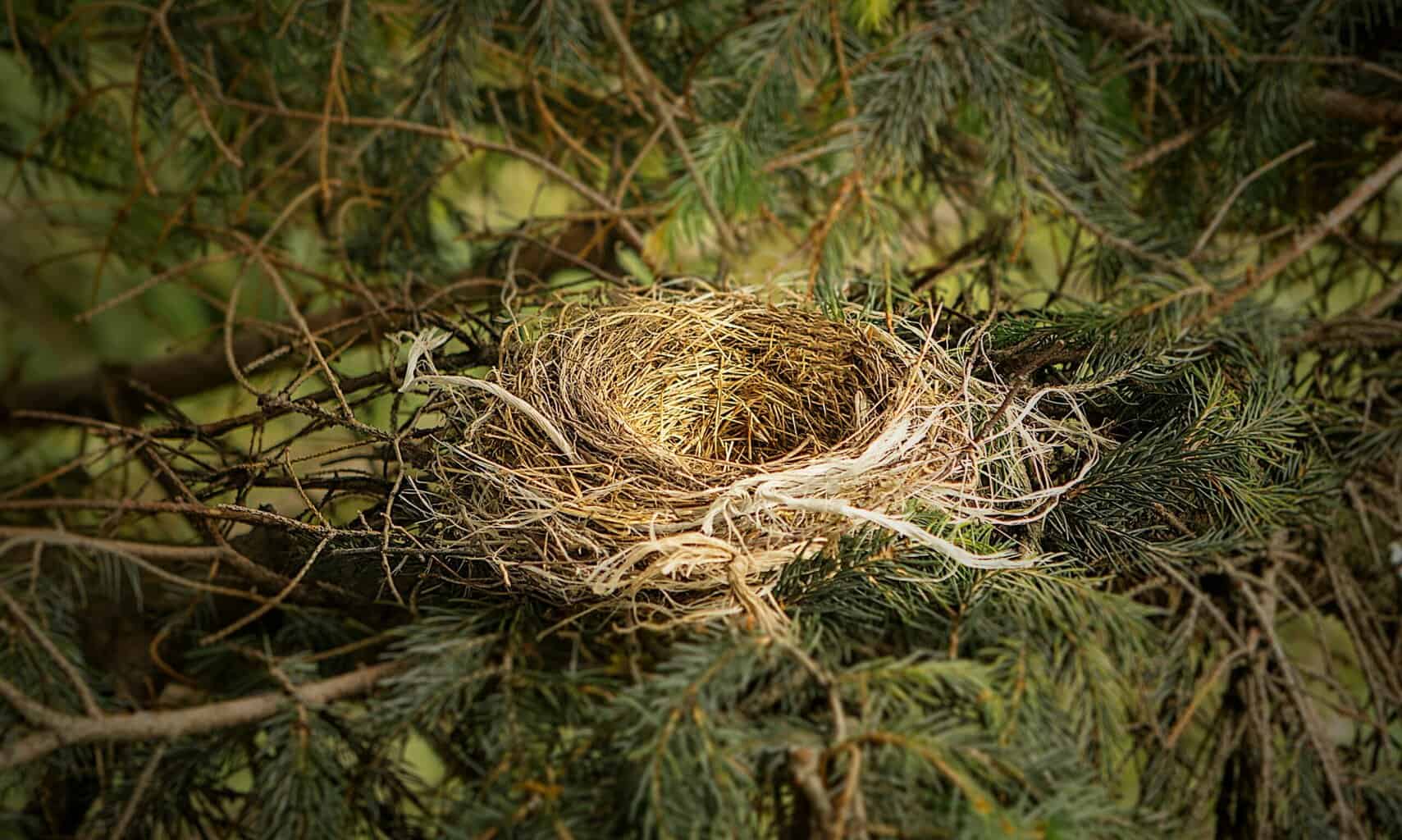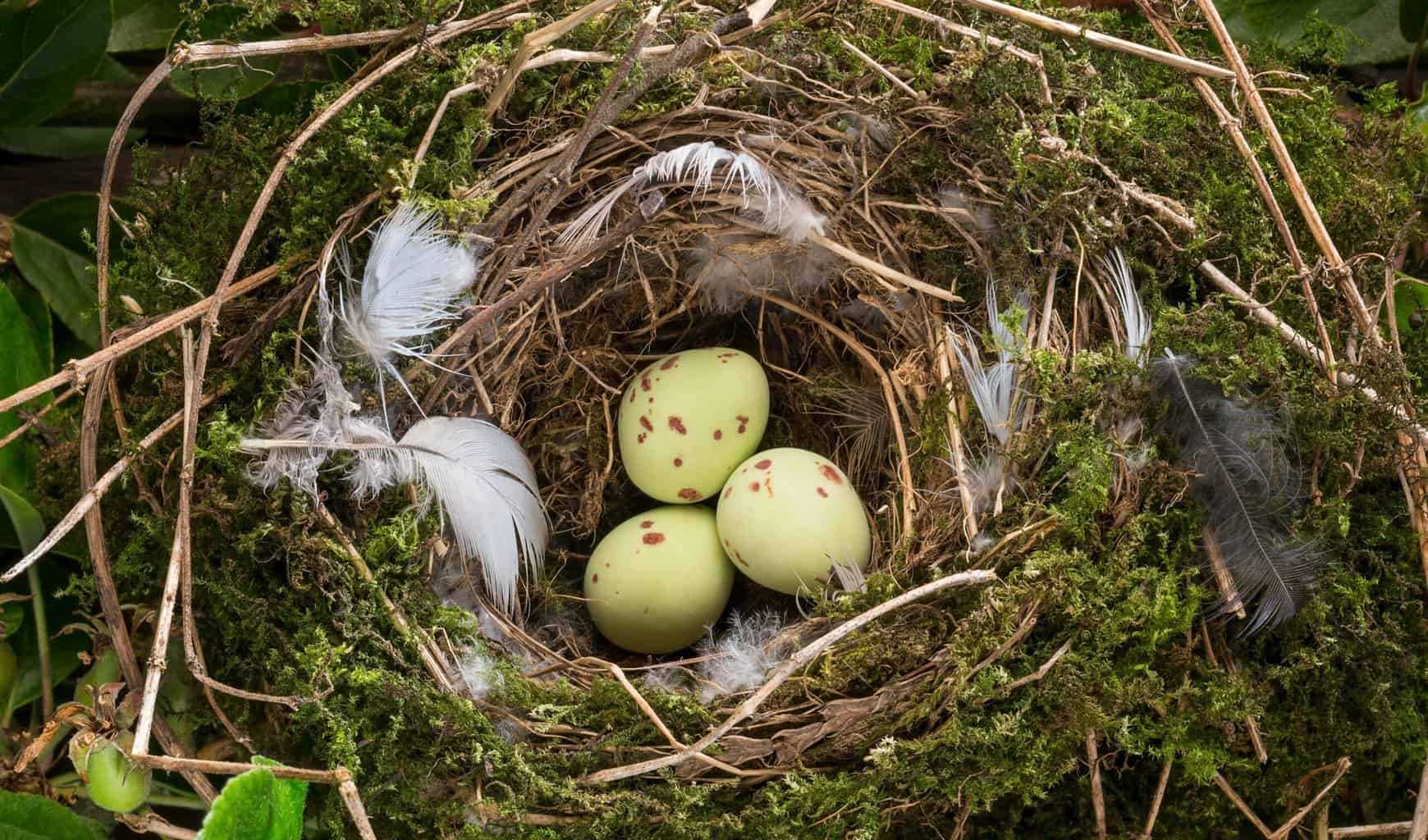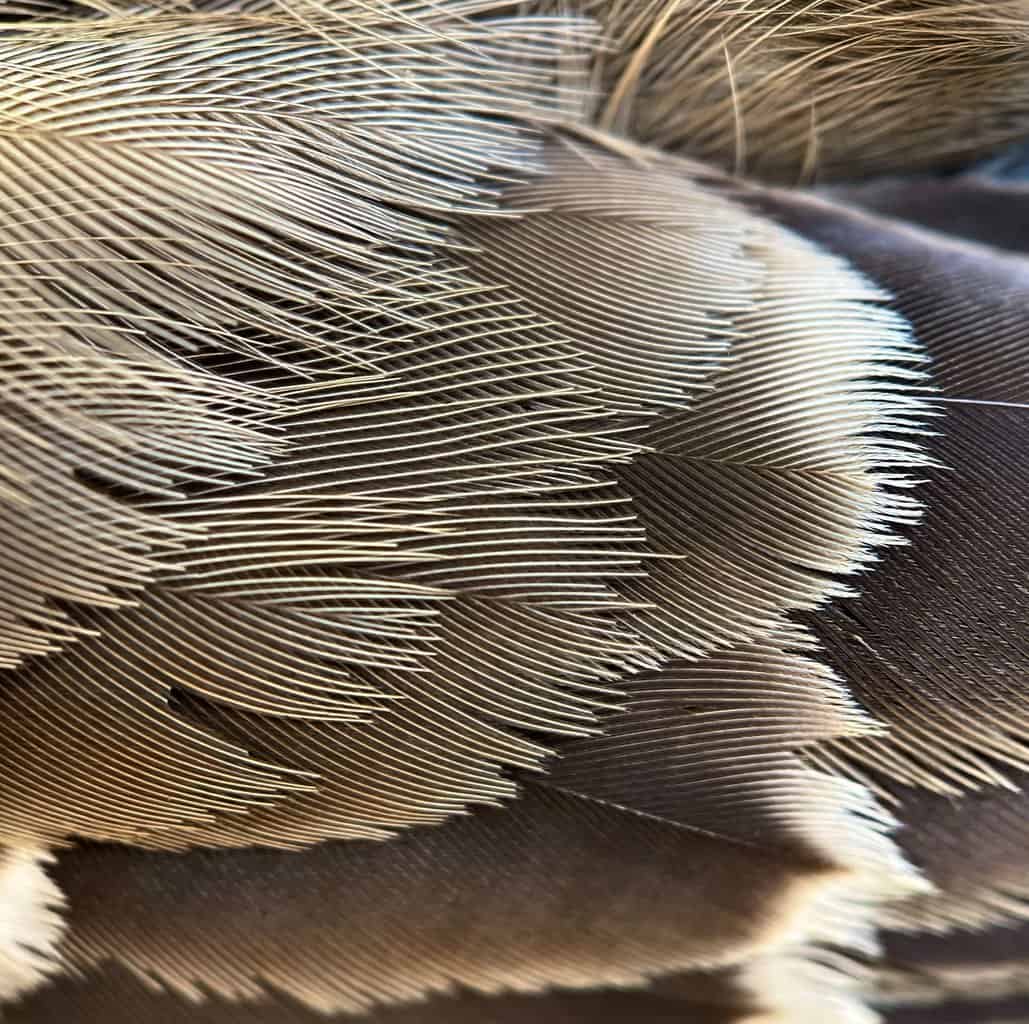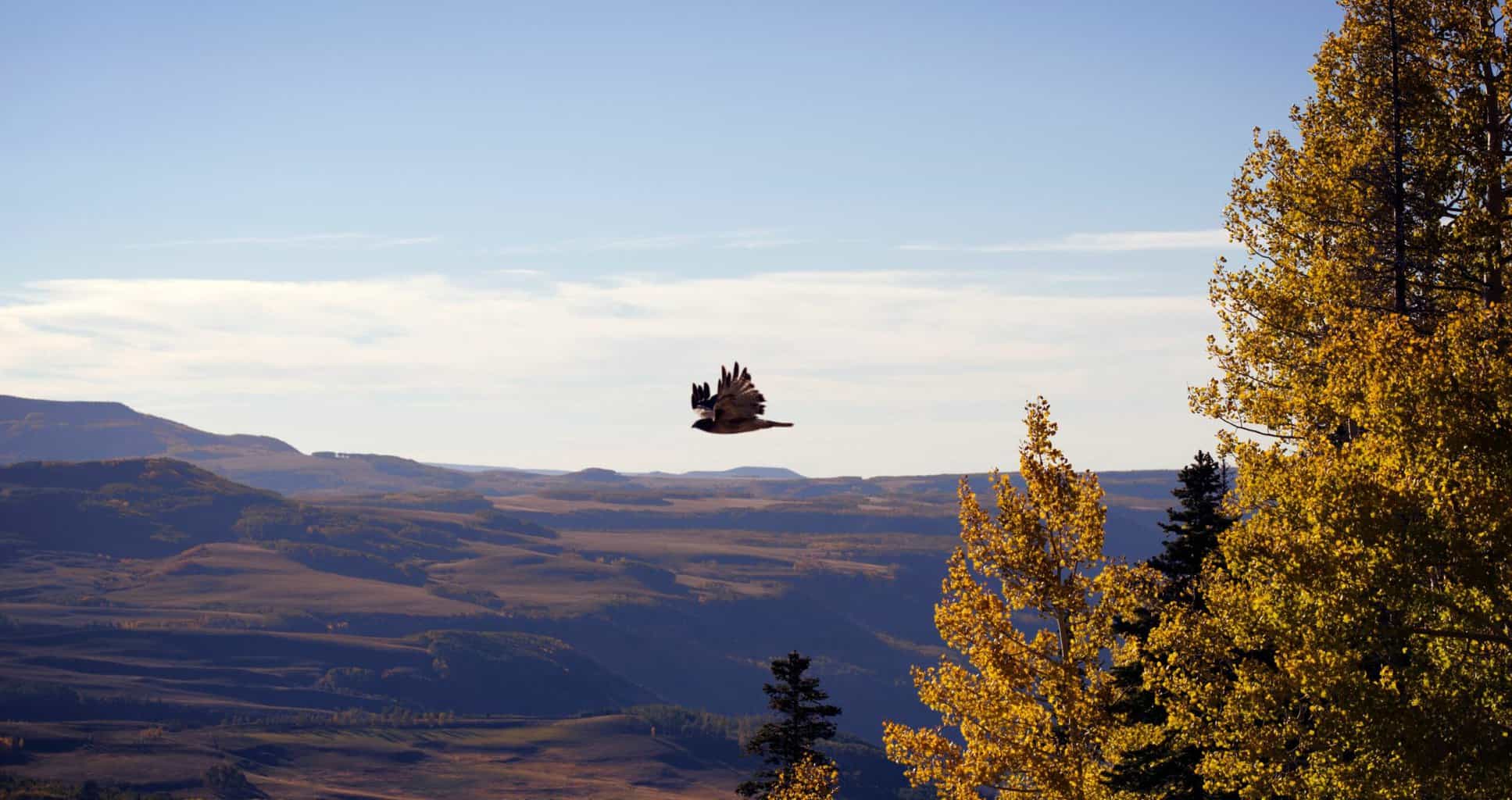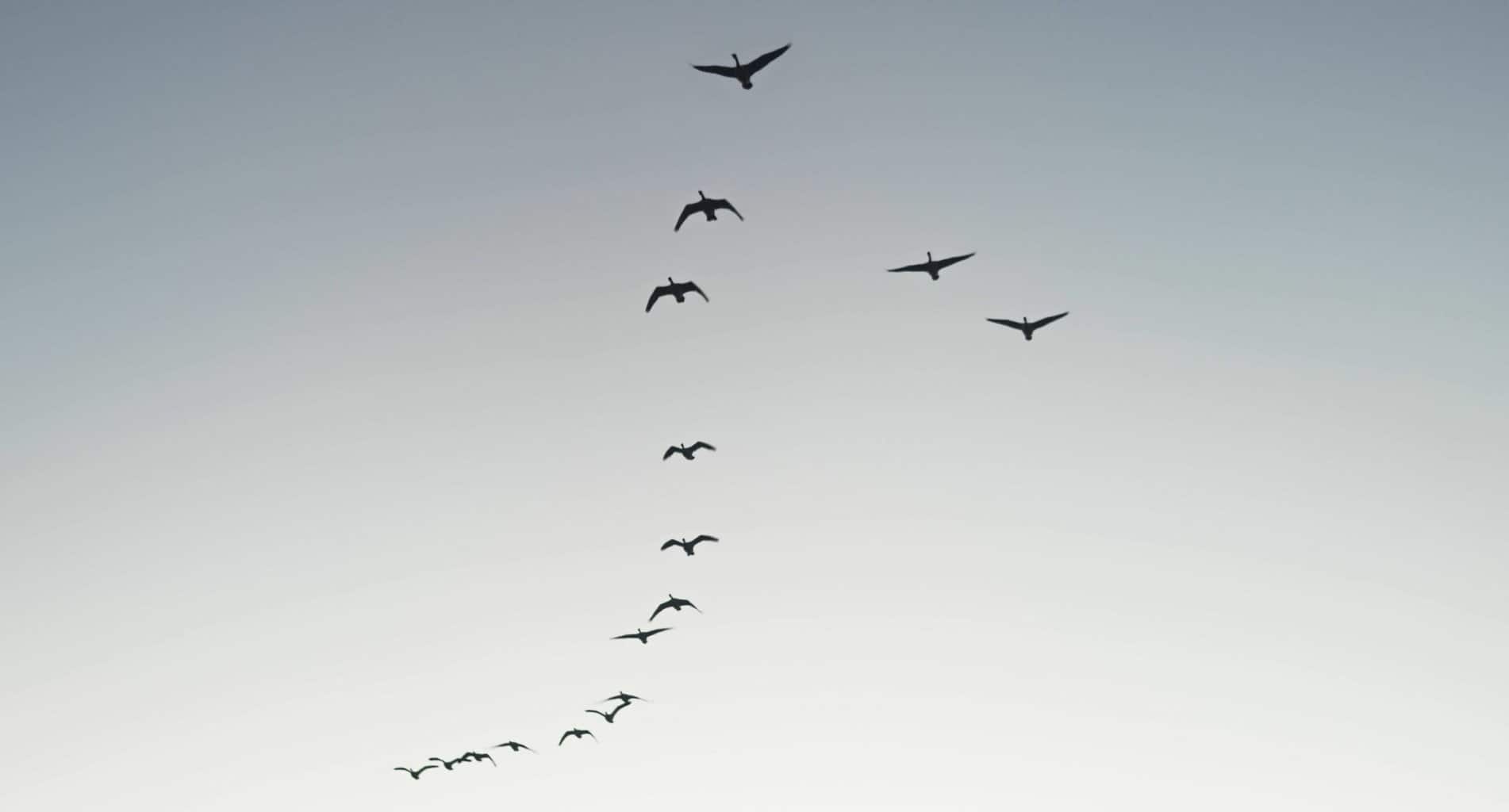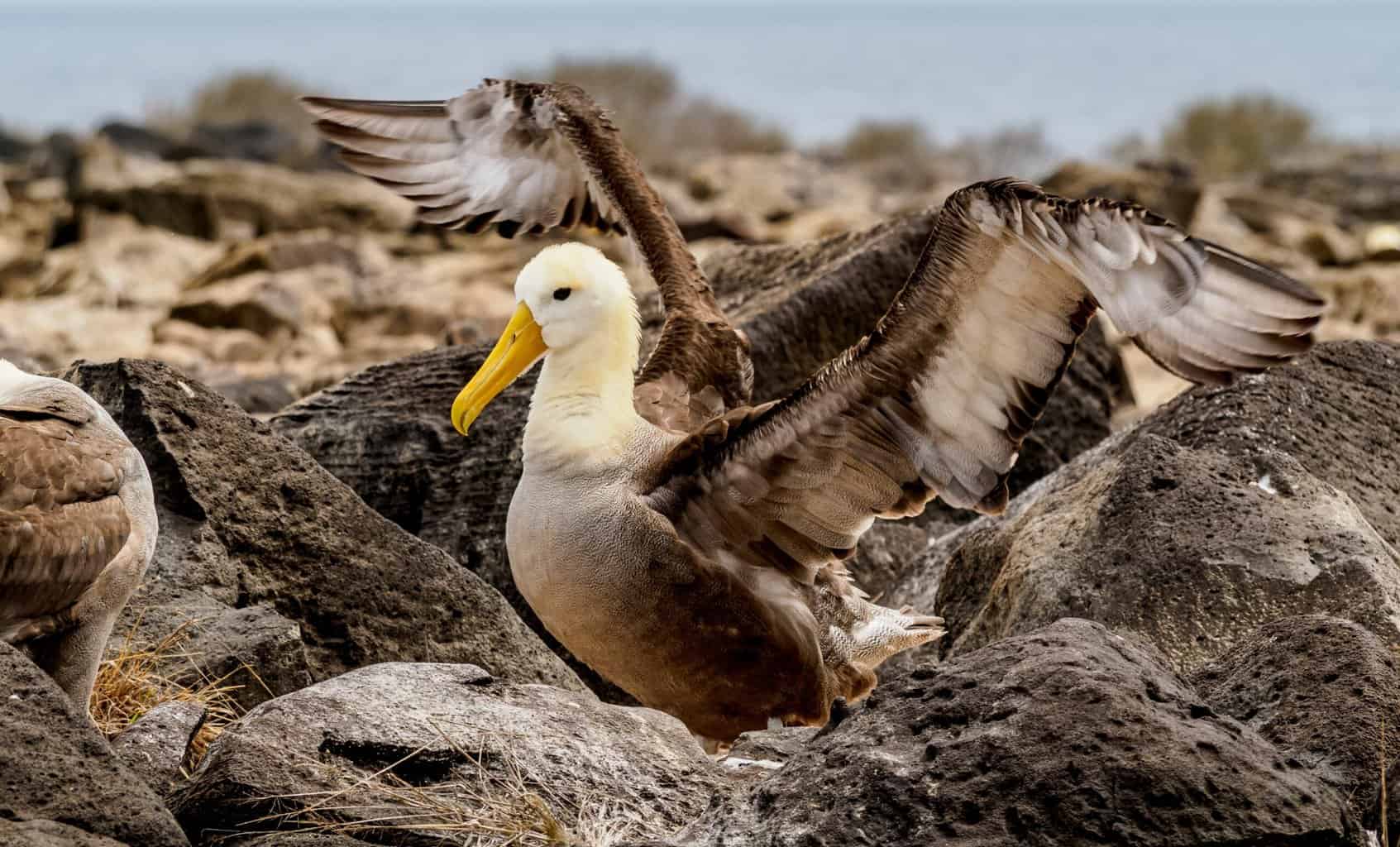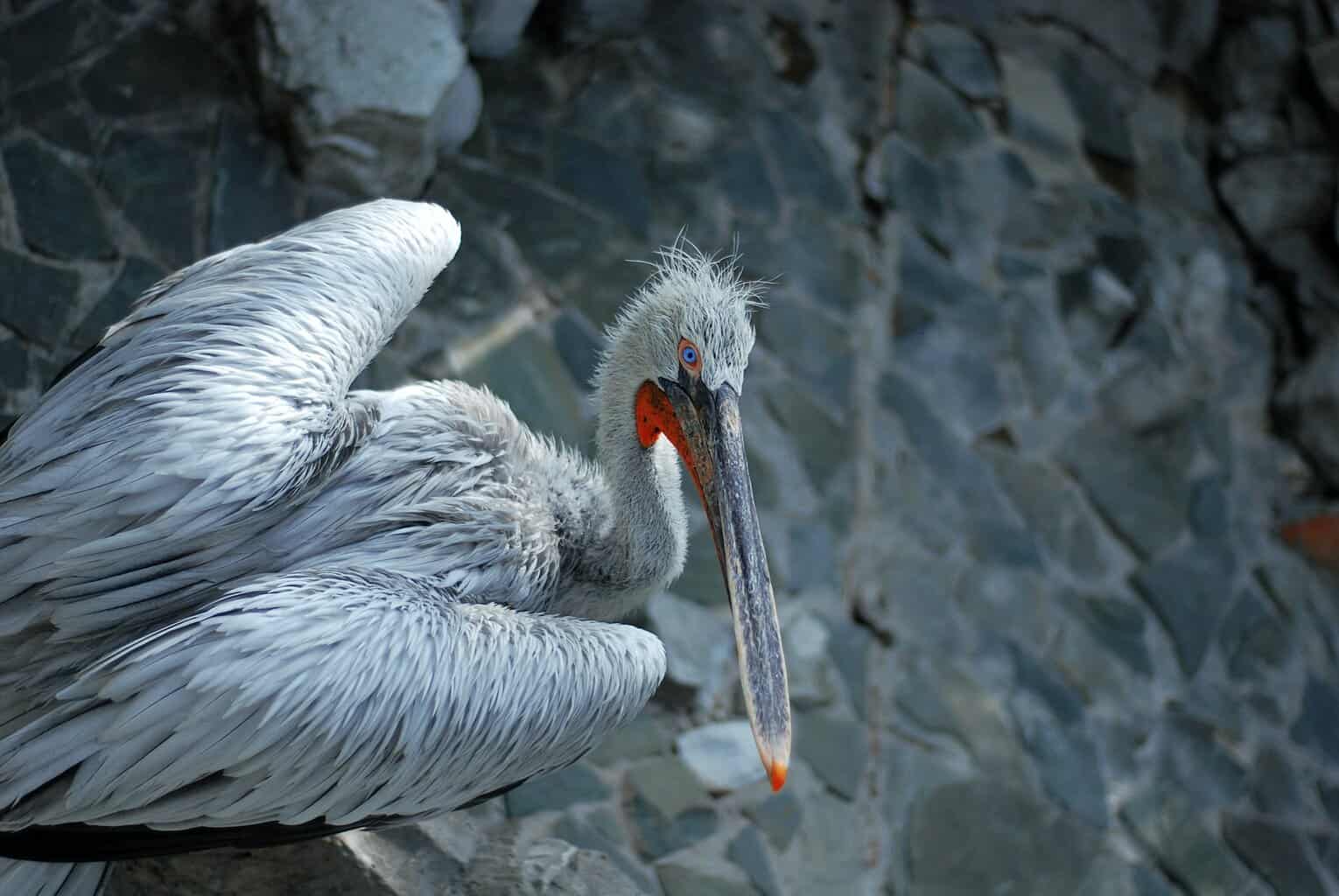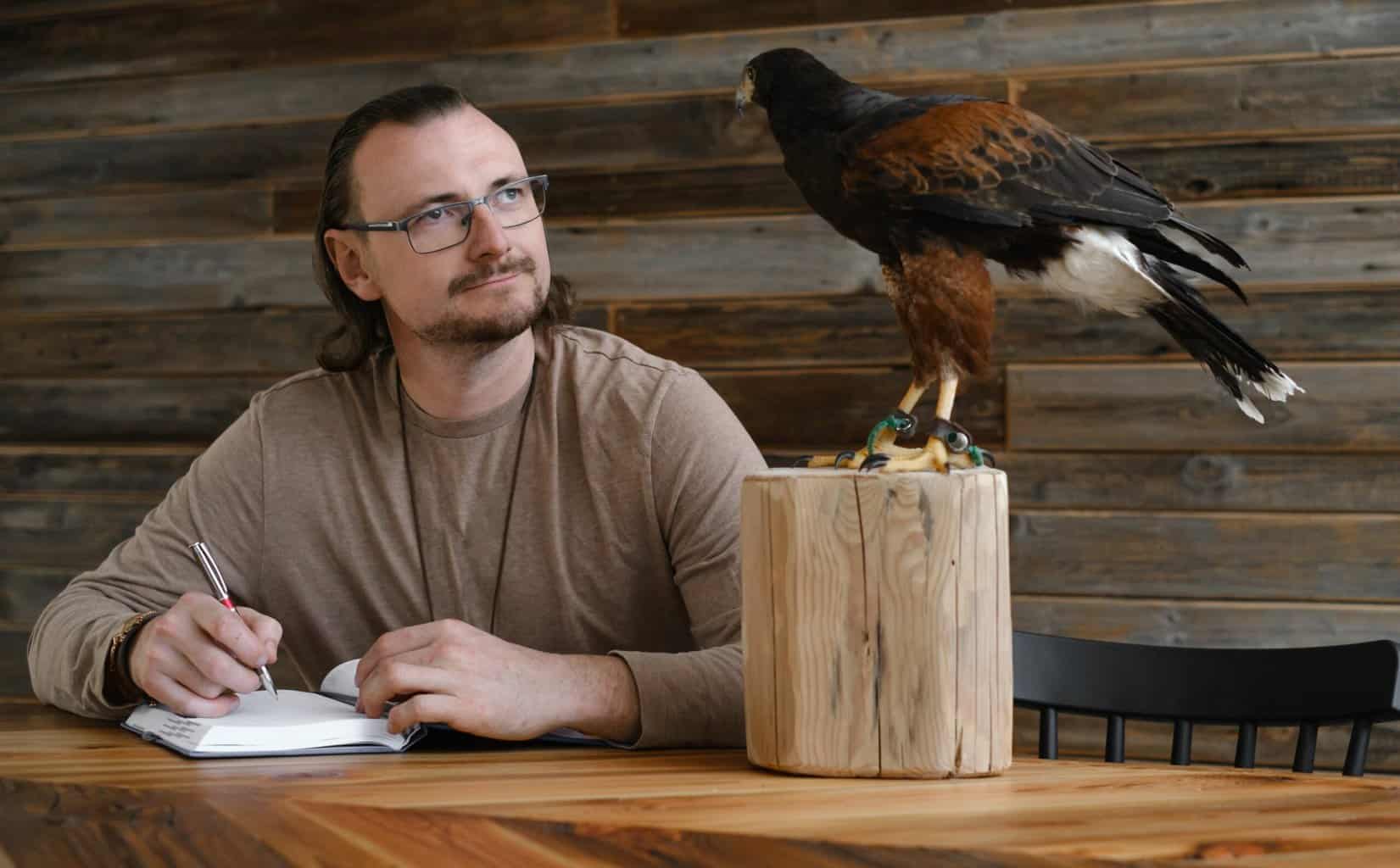- Best Amazon Bird Baths Guide - September 26, 2023
- Best Copper Bird Baths - August 30, 2023
- Best Bird Baths Available at Home Depot - August 26, 2023
It’s a bird, it’s a plane, it’s…well, it could be Superman, but I’d be more excited if it were a bird. Even since I was a kid, birds have fascinated me. They are fluffy and could fly – feathered jewels of the sky – what more could you want?! They come in a dizzying array of colors and sizes, some with unbelievably extraordinary feather modifications, others flying vast distances, living in all climates, eating every type of food, and showcasing diverse behaviors.
I was so interested in birds that I dedicated many years to studying their intricate behaviors in some amazing places. From looking at how two species of vireos coexist, to studying seabirds in Alaska and Hawaii, to finding nightingales in France, to studying urban birds in Australia, I have been privileged to help learn about the biology of many species for various research projects. I also have spent countless hours watching birds as I used photography to capture their antics.
Birds have been persecuted and praised, loathed and lauded, destroyed and deified, raised as pets, raised as food, used to terrorize, and used to calm. Let’s explore what it means to be a bird.
Bottom Line Up Front
A bird is a warm-blooded vertebrate with feathers that lays eggs. They are literally living dinosaurs, the only group of animals directly descended from theropods, and have been around for 160 million years. There are about 10,853 named species, of which about 6,500 are passerines. They have figured out ways to fill every niche in every corner of the globe. Almost a quarter of birds are listed as Near Threatened or Threatened, and almost half of all species are in decline, mainly due to habitat loss and introduced species.
Taxonomy
The line in the fossils of what was a non-avian dinosaur versus what we now consider Class Aves is blurry, with new small feathered early fossils expanding our view of early avian evolutionary history. Currently, the earliest bird-like fossil is Archaeopteryx, which still had teeth, fingers with claws, and a bony tail but also had feathers and so was likely warm-blooded and could fly/glide. Birds are most closely related to crocodiles of all the living groups of animals.
- Kingdom Animalia
- Phylum Chordata
- Clade Sauropsida
- Clade Avemetatarsalia
- Clade Ornithurae
- Class Aves
All birds are within Class Aves. With over 10,000 known species, it’s not surprising that species-level and high-level taxonomic relationships are still being changed as new genetic data emerge. A high-level taxonomic breakdown of all bird groups, with the number of living species, looks like:
- Infraclass Palaeognathae
- Order Struthioniformes (ostriches: 2 species)
- Order Rheiformes (rheas: 2 species)
- Order Casuariformes (cassowaries, emus: 4 species)
- Order Apterygiformes (kiwi: 5 species)
- Order Tinamiformes (tinamous: 46 species)
- Infraclass Neognathae
- Clade Galloanserae
- Order Galliformes (landfowl: 290 species)
- Order Anseriformes (waterfowl: 180 speices)
- Clade Neoaves
- Clade Mirandornithes
- Order Phoenicopteriformes (flamingoes: 6 species)
- Order Podicipediformes (grebes: 22 species)
- Clade Columbimorphae
- Order Columbiformes (pigeons: 344 species)
- Order Mesitornithiformes (mesites: 3 species)
- Order Pterocliformes (sandgrouse: 16 species:)
- Clade Passerea
-
- Order Cuculiformes (cuckoos: 150 species)
- Order Otidiformes (bustards: 26 species)
- Order Musophagiformes (turacos: 23 species)
- Order Gruiformes (rails, cranes: 189 species)
- Order Charadriiformes (waders: 390 species)
- Order Opisthocomiformes (hoatzin: 1 species)
- Clade Strisores
- Order Caprimulgiformes (nightjars: 89 species)
- Order Nyctibiiformes (potoos: 7 species)
- Order Steatornithiformes (oilbirds: 1 species)
- Order Podargiformes (frogmouths: 16 species)
- Order Aegotheliformes (owlet-nightjars: 11 species)
- Order Apodiformes (hummingbirds, swifts: 450 species)
- Clade Phaethoquornithes
- Order Eurypygiformes (sunbittern, kagu: 2 species)
- Order Phaethontiformes (tropicbirds: 3 species)
- Order Gaviiformes (loons: 5 species)
- Order Procellariiformes (albatross, petrels: 147 species)
- Order Sphenisciformes (penguins: 19 species)
- Order Ciconiiformes (storks: 19 species)
- Order Suliformes (boobies, cormorants, etc: 59 species)
- Order Pelecaniformes (pelicans, herons, egrets: 118 species)
- Clade Telluraves
- Order Cathartiformes (condors, New World vultures: 7 species)
- Order Accipitriformes (hawks, eagles, vultures, etc.: 262 species)
- Order Strigiformes (owls: 220-225 species)
- Order Coliiformes (mousebirds: 6 species)
- Order Leptosomiformes (cuckoo roller: 1 species)
- Order Trogoniformes (trogons: 46 species)
- Order Bucerotiformes (hornbills, hoopoe: 72 species)
- Order Coraciiformes (kingfishers, etc.: 184 species)
- Order Piciformes (woodpeckers, etc.: 450 species)
- Order Cariamiformes (seriemas: 2 species)
- Order Falconiformes (falcons: 60 species)
- Order Psittaciformes (parrots: 398 species)
- Order Passeriformes (songbirds and kin: 6,500 species)
-
- Clade Mirandornithes
- Clade Galloanserae
Thus, of the 10,853 species, 4,353 are spread across 44 Orders, while the rest are in the single Order Passeriformes! This listing doesn’t include extinct species either.
Body Size
The smallest bird is the bee hummingbird at 5.5 cm long, and the largest living bird is the ostrich at 2.8 m tall. The largest bird that ever lived was the elephant bird (Vorombe titan) which weighed 1,600 lb and was 3 m tall, and was not only flightless but had evolved the loss of wings entirely. Elephant birds went extinct around 1,000 years ago due to hunting by humans.
Diet
Bird beaks are one of the most cited examples of natural selection, and the beaks of the Galapagos finches are depicted in textbooks worldwide. Basically, beaks look like their function: hummingbirds have long bills for nectar in deep flowers; shorebirds have long flexible bills for hunting invertebrates in the mud; hawks have powerful hooked beaks for tearing flesh; finches have thick beaks for cracking seeds.
The main categories of diet are:
- Carnivorous (other animals) – large raptors, vultures
- Avivorous (other birds) – small raptors
- Ophiophagus (snakes) – snake hawks, secretary bird
- Piscivorous (fish) – osprey, sea eagles, seabirds (puffins, penguins, etc.), ducks (mergansers, etc.), kingfishers
- Insectivorous (insects) – warblers, flycatchers, swallows, nighthawks, frogmouths, woodpeckers
- Molluscivorous (snails/oysters) – oystercatchers, limpkin, wading birds
- Frugivorous (fruit) – orioles, waxwings, toucans
- Granivorous (seeds) – finches, sparrows, parrots
- Mucivorous (sap) – sapsuckers
- Nectivorous (nectar) – hummingbirds, honeycreepers, sunbirds
- Omnivorous (everything) – crows, ducks, gulls
As you can see, there are many ways to eat other animals, and birds have evolved to fill every niche except exclusive pollen eaters. Even though bird groups have been assigned to one category, most birds cross categories at some point: for example, hummingbirds eat insects, especially when they’re feeding young; warblers consume fruit in the winter; and woodpeckers eat seeds. Vultures are the only group that is specialized carrion eaters, consuming dead prey, but many other birds will also grab a bite of free meat.
As an example of an extreme adaptation, sword-billed hummingbirds have the longest bill-to-body size ratio of any bird, which has evolved to get nectar from flowers with very long corollas.
Smell
Traditionally, birds are considered to have poor olfactory abilities, though vultures are the well-known exception. However, seabirds (albatross, petrels, etc.) also have an excellent sense of smell, which makes sense considering they patrol the open ocean where food is very patchily distributed. In fact, most birds have olfactory bulbs, and many, like pigeons, ravens, and ducks, respond to smells. Kiwis, the only bird with nostrils at the end rather than the base of the bill, also have a keen sense of smell, sniffing out earthworms underground.
Echolocation
Though typically thought to be restricted to bats and marine mammals, there are 16 species of bird also able to navigate by echolocation – the oilbird and switflets. These birds nest in caves and tunnels and use audible clicks to navigate the darkness.
Vocalizations
The sounds birds make are generally broken down into calls and songs. Songs are more complex than calls and have different functions: songs are used in territory defense and mate attraction, while calls are used as alarms or for contact among individuals. Some birds produce no vocalizations, while others use their feathers or movements to produce sound (e.g., woodpeckers tap with their bills, grouse drum with their wings, and hummingbirds vibrate their tail feathers).
The syrinx, a bony structure at the bottom of the trachea, produces sound by vibrating as air is forced past its membranes. Birds control the pitch by changing the tension on the membranes and control both pitch and volume by changing the air force. Since birds can independently control the two sides of the syrinx, they can produce two unrelated notes at once. The perching birds (Order Passeriformes) have the most developed song; for example, species such as the wood thrush can sing rising and falling notes simultaneously, and the northern cardinal sings more notes than are on a piano keyboard in a tenth of a second. Some consider the common nightingale to have the most beautiful sound; as someone lucky enough to help study these birds in France, I agree! Due to its song’s melodic quality, and the fact that males sing at night, it has appeared in cultural references since at least 414 BC.
Males who sing well suggest they’re in good health, so females choose those males. In Eurasia and North America, most song is produced by males, but females in the tropics and the desert belts of Australia and Africa often sing just as much. These differences may be caused by the less predictable climate of Australia and Africa that require that birds are ready to breed at any time conditions become favorable, so vocalizations by both sexes may help bring them into breeding condition. Female song may also relate to stronger pair bonding and territoriality in tropical species that don’t migrate. However, new evidence shows that female song is much more common in oscine passerines (songbirds) than formerly thought, and their common ancestor likely included females who sang.
In some birds, song is learned; in others, it is innate (purely genetic). Some of the best song learners are mockingbirds, thrashers, and parrots; this ability is one of the reasons that parrots are so popular as pets, as are song canaries. Brown thrashers have the most extensive repertoire of any North American bird, with at least 1,100 songs and perhaps over 3,000 per individual.
Some vocalizations have specific information that even us dumb humans can understand. While studying smooth-billed anis, I started to recognize their alarm calls, which differ depending on whether they spot a terrestrial or avian predator. One time I heard their ‘chlurp’ avian call and looked around – and sure enough, a hawk flew by.
Reproduction
Birds are well known for their elaborate courtship rituals. They do this using both vocal and visual displays. Visual displays involve either elaborate feather ornaments, dancing, or building structures. The types of reproductive systems are:
- Monogamy: one male and one female with social bonds
- Polygyny: one male mates with more than one female and they are socially bonded
- Lekking: one male mates with more than one female and there are no social bonds
- Polyandry: female mates with more than one male
- Polygynandry: two or more males bond socially with two or more females
- Promiscuity: both males and females have more than one sexual partner but there are no social bonds
- Brood parasites: females lay their eggs in the nest of another species
Monogamy can either be social or genetic. Many birds have social monogamy, where they share a territory and raise the young, but either pair member may also engage in extrapair copulations where they sneak off territory and mate with other birds. This means that a female may lay eggs sired by two or more males. Genetic monogamy is where the pairs are socially monogamous and only mate with each other. Social monogamy is much more common than genetic monogamy, in songbirds at least, where of 180 socially monogamous species, only 10% were also sexually monogamous.
Polygyny is uncommon in bids. One-male, multi-female groups occur in species such as the house wren, great reed warbler, red-winged warbler, red-winged blackbird, and common pheasant. In these species, males tend to be much larger than females.
Lekking is a form of polygyny where there is no social bond. In this system, males are usually close together and display as females travel among them. This usually means that only a few males breed, as most females choose the best males. The males often have elaborate visual or auditory signals to show their fitness. Lekking occurs in some species within grouse, bustards, sandpipers, parrots, cotingas, manakins, bulbuls, weavers, and birds of paradise. The most extreme examples are:
- kakapo: a flightless parrot, where males make booming calls at night that can be heard over 1 km away
- birds of paradise: males have extremely elaborate feather ornaments and dance to show them off to the female
- manakins: males dance together in an elaborate ritual that they practice for days, though only the alpha male gets to mate
- bowerbirds: males create large stick displays (bowers) and place hundreds of brightly colored objects (such as shells, leaves, flowers, feathers, stones, berries, and even discarded plastic items or pieces of glass) around the display site
Polyandry is uncommon in birds, as females have to lay eggs, so the male has to take over incubation and offspring care while the female leaves to mate with a different male. This mating system is restricted to a few birds, such as the greater rhea, brown kiwi, red-necked phalarope, and Eurasian dotterel. It often occurs with complete sex role reversal, including females being larger, more aggressive, and even more colorful than males.
Polygynandry is the rarest strategy, estimated at being present in only 0.1% of birds. The hihi, Smith’s longspur, alpine accentor, and tinamous are examples of this strategy. True promiscuity may not exist in birds, as the term is often incorrectly applied to other mating systems, mainly social monogamous birds that engage in extrapair copulations.
There are a few groups of true avian brood parasite, including cuckoos, cowbirds, indigobirds, whydahs, and honeyguides. Most hosts have co-evolved recognition mechanisms and will destroy parasitic eggs or abandon the nest. Yet the parasitic species may retaliate against the host by destroying its nest if that happens. Some brood parasites are specialists, only using one host species, but others are generalists; the brown-headed cowbird has 221 known host species. Species recognition also has to be innate in parasitic species (no imprinting) because they don’t see members of their own species until they’re adults. Some ducks display intraspecific brood parasitism, where they will lay a couple of their eggs in another female’s nest, perhaps as a strategy in case their own nest gets predated.
There are also various forms of cooperative breeding, where there are helpers at the nest, or where the females lay their eggs in the same nest and parental care is shared.
Nests
Most birds build nests, but not all, and they certainly don’t do it the same way. Some birds lay their eggs on rocks or bare branches; some bury their eggs underground; some weave elaborate baskets. The general types of nesting structures are:
- none: seabirds, penguins, potoo, cuckoos/cowbirds (brood parasites)
- scrape: shorebirds, terns, landfowl
- mound: megapodes, flamingoes
- burrow: burrowing owls, puffins, shearwaters, kingfishers
- cavity: woodpeckers, kingfishers, owls, ducks
- cup: passerines, hummingbirds, swifts
- platform: raptors
- pendant: oropendolas, weavers, caciques
The shape and location of nests are adaptations to maximize offspring survival – though sometimes humans have changed this. In Hawaii I watched a white tern lay its egg on the outdoor hose facet handle – white terns don’t make nests – and the egg hatched, but because of the distance between the handle where the chick was sitting and the facet where the adult had to perch with food, the chick could not successfully feed, and it did not survive.
Not surprisingly, the smallest nests are made by the smallest birds: hummingbirds have nests that may be a mere 2 cm high and 2 cm in diameter. Some birds nest in colonies, like the red-billed quelea, where there can be hundreds of nests per tree, and chinstrap penguin colonies can number two million.
Megapodes are the only group of birds that do not incubate; instead, they lay their eggs in large heaps of decaying vegetation, with the male guarding the mound and adding or removing vegetation to regulate the temperature.
Eggs
When birds hatch from eggs, they are either altricial (underdeveloped) or precocial (relatively mobile). It is thought the ancestral state was precociality, which is found in waterfowl, shorebirds, rails, and the hoatzin, as more recently evolved groups tend to be altricial, such as herons, raptors, woodpeckers, and most passerines.
The most extremely precocial group is the Megopodes (scrubfowl found in the Australasian region). Their chicks are superprecocial, as they are fully feathered and can run the day they hatch; in fact, in some species, they can even fly the day they emerge.
Egg shapes vary from very symmetric and spherical to very asymmetric and elliptical. For example, brown hawk owls have round eggs, while common murres have pear-shaped eggs (an adaptation to their cliff ledge habitats, as they make no nests, and the shape ensures the eggs roll in a circle instead of off the ledge).
Egg colors are white by default because they are made from calcium carbonate. Females can also lay down pigment, generating a range of colors that may or may not also have dark spotting. A unique case is the eggs of the smooth-billed ani, which are blue but are covered in white chalk; the chalk is scraped by the talons of females in the nest, which changes their pattern and so females cannot recognize their own eggs in this group-nesting species.
The kiwi has the distinction of laying the largest egg for its body size of any bird, with each egg weighing about one-quarter the size of the female.
Feathers
Feathers are used for flight, thermoregulation, signaling, and camouflage.
Feathers are one of the most obvious traits of birds, but they get worn and damaged, which can reduce a bird’s ability to fly. Evolution has provided the solution: all birds molt their feathers. Feather number and placement is highly determined among species, as is their replacement. However, the timing and sequence of molt can differ by age and species and is well-known for some. For example, the Pyle guides give detailed molt sequence information for 395 North American species, assisting in ageing birds as first-year and adult birds often differ in feather characteristics. Most species molt all of their feathers yearly, and some have two molts a year; some larger species may only replace some feathers annually. Most birds retain the ability to fly during flight feather molt, as only one dropped at a time (always paired so that the wings are even), though the next may be dropped while one pair is still regrowing. Some birds, like geese, drop all their flight feathers simultaneously and are temporarily flightless.
Feathers require maintenance. Birds have a uropygial gland at the base of their tail and apply the oily secretions to their feathers with their beak. Preening also helps rejoin the feather barbules while removing dirt and parasites. One study estimated that birds spend 9% of their time preening.
Feathers are inert (chemically inactive) once grown. Since they incorporate the chemical signals of an individual’s diet and hormones, they can be used as intrinsic markers to identify the general location where that feather was grown. This has dramatically improved the knowledge of individual movements between breeding and wintering grounds, especially in passerines.
In a few cases, feathers seemed to have evolved to scare predators. One example is the sunbittern, whose feathers, when spread, mimic the eyes of a large predator to ward off raptors and protect their chicks.
Flight
Birds have hollow bones, no teeth, and no bony tail, all adaptations to reduce the weight of a bird’s skeleton. Birds also have a large breastbone, called a keel, where the enlarged pectoral muscles attach that are used to power the wings.
All birds have wings – at least, all living birds. Extinct birds, such as the moa and elephant birds, completely lost their wings. Living groups still have wings but have reduced feathers, making them flightless. Flightlessness evolved in species confined to islands that did not have large mammal or reptilian predators. The exception is the ratites, which currently coexist with predators but evolved large body sizes perhaps shortly after the large dinosaurs went extinct and before mammals were large enough to become a source of predation.
There are 60 species living today that are flightless, and many that went extinct in the last 10,000 years:
- Ostriches: 2 living, 1 extinct
- Emus: 1 living, 3 extinct
- Cassowaries: 3 living
- Moa: several species all extinct
- Elephant birds: several species all extinct
- Kiwis: 5 living
- Rheas: 2 living
- Gamebirds: 3 extinct
- Waterfowl: 6 living, 13 extinct
- Owlet-nightjars: 1 extinct
- Mesites: 1 living
- Pigeons/doves: 5 extinct
- Cranes/rails/coots: 19 living, 33 extinct
- Grebes: 2 living, 1 extinct
- Shorebirds: 1 extinct
- Penguins: 18 living, 2 extinct
- Boobies/cormorants: 1 living
- Pelicans/herons/ibises: 1 living, 3 extinct
- Owls: 3 extinct
- Kingfishes: 1 extinct
- Falcons/caracaras: 1 extinct
- Parrots: 1 living
- Perching birds: 1 living, 5 extinct
Many flightless birds are now extinct. Humans found these birds easy prey, and since most flightless birds occurred on islands, introducing non-native predators resulted in the extinction of many flightless species as they had nowhere else to go, not even into a tree.
Migration
Many bird species migrate to take advantage of global changes in seasonal temperatures. Many landbirds, shorebirds, and waterbirds undertake annual long-distance migrations, usually triggered by the amount of daylight and weather. These birds breed in temperate or polar regions and spend the rest of the year in the tropical regions or opposite hemispheres.
Migration is highly demanding energetically, particularly as birds need to cross deserts and oceans without refueling. Landbirds can fly around 2,500 km, and shorebirds can go for 4,000 km. Seabirds also undertake long migrations, the longest annual migration being those of sooty shearwaters, which complete a yearly round trip of 64,000 km.
Some bird species undertake shorter migrations, traveling only as far as is required to obtain food. Irruptive species such as the boreal finches are one such group and can commonly be found at a location in one year and absent the next. Species may also travel shorter distances, such as when making latitudinal migrations. A partially migrant species means that only some of the population migrates. Partial migration can be common in southern regions; in Australia, 44% of non-passerine birds and 32% of passerines exhibited partial migration.
Some species are nomadic, making regional movements according to weather and food availability. Most parrots are neither migratory nor sedentary, with movements instead dispersive, irruptive, or wandering.
Birds navigate during migration using various methods, such as the sun by day and a star compass at night. Birds that use the sun compensate for its changing position by using an internal clock, and some species can sense the Earth’s geomagnetic field.
I still remember studying the migratory white-eyed vireo in Mexico. These birds had likely bred somewhere in the southeast US, a straight-line distance of at least 2,000 km, and yet returned to the exact same winter territory year after year, an impressive feat for a 12 g bird.
The longest nonstop flight was made by a bar-tailed godwit, which flew 8,425 miles over 11 days without stopping.
Age
The oldest documented bird in captivity was a Major Mitchell’s cockatoo, who was over 82 years old. Other birds are believed to be older, but there is more uncertainty regarding the legitimacy of those claims. A red-and-green macaw named Poncho is listed as 96 years old, a blue-and-gold macaw named Charlie is claimed to be 114, and another Major Mitchell’s cockatoo apparently reached 120.
The oldest known wild bird is a Laysan albatross named Wisdom. She was banded in 1956 and was already at least 5 years old. As of 2022, she had again returned to Midway Atoll to breed, making her at least 71 years old and still fertile. It is estimated that Wisdom has flown over 4,800,000 km since 1956 (equivalent to flying 120 times around the Earth).
The bird with the shortest lifespan is probably the ruby-throated hummingbird, with an average lifespan of 3-5 years.
Populations
Currently, the red-billed quelea, found in Africa, is the most abundant wild bird, with an estimated population size of 1.5 billion. However, the domestic chicken is far more abundant, at 26-33 billion birds, depending on the source.
The passenger pigeon was likely the most abundant wild bird to ever have lived. Estimates put its population at 3-5 billion before it went extinct, perhaps accounting for one-quarter to one-third of all birds in North America at the time. Another way to imagine these large numbers is that if the pigeons flew end-to-end, they would encircle the Earth 22 times.
Extinctions
The most dramatic human-caused extinctions occurred on the islands of Melanesia, Polynesia, and Micronesia, where an estimated 750–1800 species of birds became extinct, half of which were rails. Because this is based on incomplete historical evidence, these extinctions are usually not included in counts of human-caused extinctions.
Since the year 1500, 159 known species of birds have gone extinct (though estimates vary by source). Losses were due to several factors, including introduced predators (invasive brown tree snakes eliminated 60% of Guam’s native bird species, and introduced cats and pigs killed the dodo), hunting (especially flightless birds, including the largest ever to have lived – the elephant bird – perhaps as early as the year 1200, but also abundant birds, such as the passenger pigeon) to natural disasters (the San Benedicto rock wren existed on one volcanic island that erupted and wiped out the entire species). Some species are only known from single records and have no live sightings or distribution information; the status of many of these species is ‘likely’ extinct, as it is tough to prove an absence.
As of 2019, almost one-quarter of bird species were listed as Near Threatened or Threatened (Vulnerable, Endangered, Critically Endangered, Extinct in the Wild).
- 10,947 species have been assessed
- 52 lack enough data to make an assessment (Data Deficient)
- 1,101 are Near Threatened
- 798 are Vulnerable
- 460 are Endangered
- 223 are Critically Endangered
- 5 are Extinct in the Wild (only since the assessments began, not in total)
That means 2,587 species (or 23.6%) are officially designated as being in some type of trouble. One in 8 species is threatened with extinction.
A recent study estimated North America had lost 2.9 billion birds since 1970, including millions of individuals from even common species. A similar story has emerged in Europe, which has lost 600 million birds since 1980.
Globally, 49% of bird species are in decline. This number is higher than the IUCN listings because a species can have lost much of its population but still not be listed.
Even abundant species are not immune. The passenger pigeon, with an estimated 3-5 billion birds, went extinct in the wild in 1901 due to deforestation and hunting. Hunting pressure was intense: in 1878, during one of the last large nesting attempts (these were colonial nesters), people killed 50,000 birds each day for nearly five months. Legislative attempts at protection were dismissed a mere 50 years before the bird was extinct in the wild (the last individual died in a zoo in 1914).
Relationship With People
Birds are useful to people. Birds of prey are used to scare away smaller birds that pose a hazard to planes at airports. Birds are also consumed by humans in many different ways, with the domestic chicken the most obvious. Several species are kept as pets, especially budgerigars, parrots, and finches.
Birds are also persecuted and killed, especially in the name of protecting crops, fish, or other resources humans wish to have instead. Humans also keep cats as pets, and free-roaming cats cause the death of 1.3-4 billion birds each year in the US alone. The 1963 movie ‘The Birds’ by Alfred Hitchcock, where birds violently attack people, is classified as “culturally, historically, or aesthetically significant” and is preserved in the National Film Registry.
Bird’s nest soup is what it sounds like – edible bird nests, mainly from several species of swiftlet, which make their nests using saliva. These are considered the most expensive animal product consumed by people, with prices reaching up to $3,000 per pound.
Ecological Role
Birds interact with all aspects of the environment. They are food, they are predators, they pollinate, disperse seeds, reduce disease spread, create habitat for other animals, reduce pests, and move nutrients. For example, insectivorous birds eat 400–500 million metric tons of arthropods annually, and bird guano has been used as a fertilizer for at least 1,500 years.
FAQs
Answer: Yes, just not an external ear structure. Some species, like some owls, have feather tufts at the top of their heads that are sometimes referred to as ear tufts, but are not part of hearing. Owls though do have ears that placed asymmetrically on the sides of their heads, allowing them to pinpoint the exact location of a sound.
Answer: No, but they still possess the gene the produces teeth – that gene is just deactivated.
Answer: They exchange gases through tiny pores in their eggshell. That’s why eggs can drown – gases can’t exchange through the shell if the pores are blocked by water.
Conclusion
It can become easy to become bored by the birds in your backyard. Yet a newcomer to Canada would exclaim over the brilliant red cardinal, the fearless chickadee, the bright blue jay, the sheer number of spring warblers migrating through, gaudy orange orioles… And each one, regardless of color, has unique behaviors in how it mates, migrates, and finds food. I hope this summary has excited your interest in birds and you’ll take the leap into their fascinating world.
References
Looking for more interesting readings? please check out:


